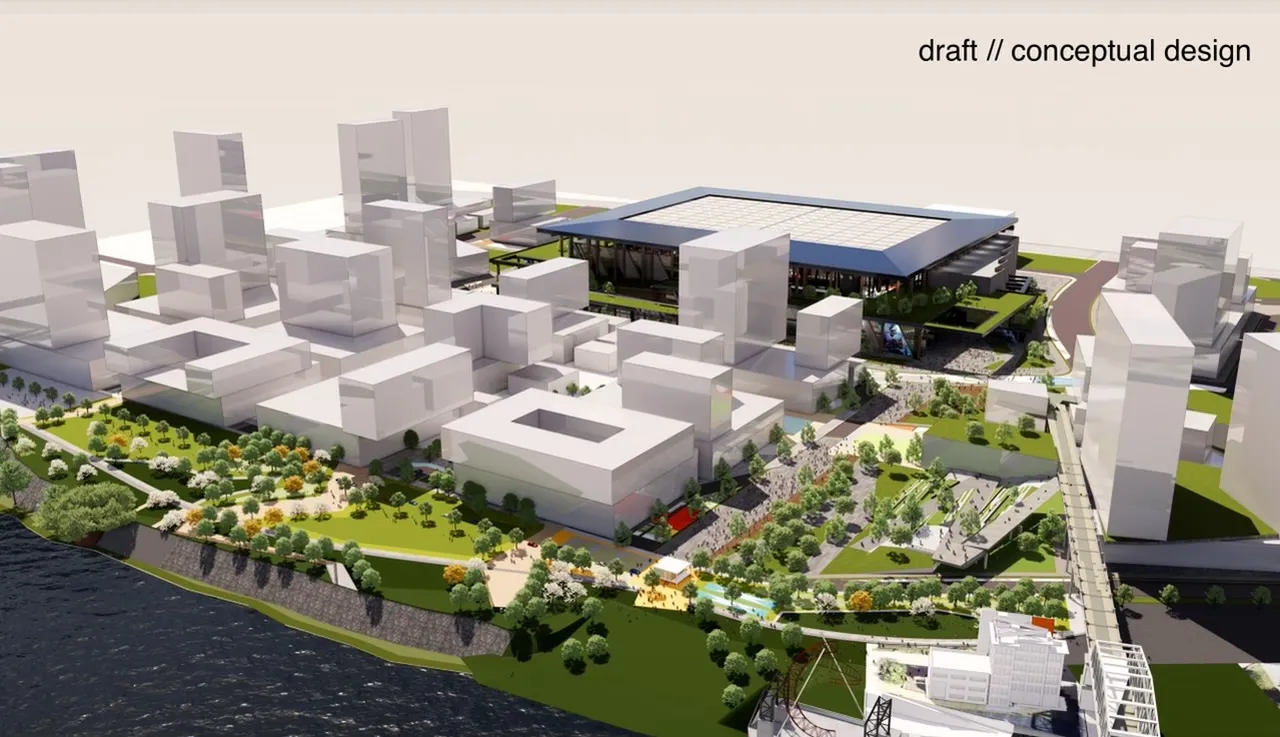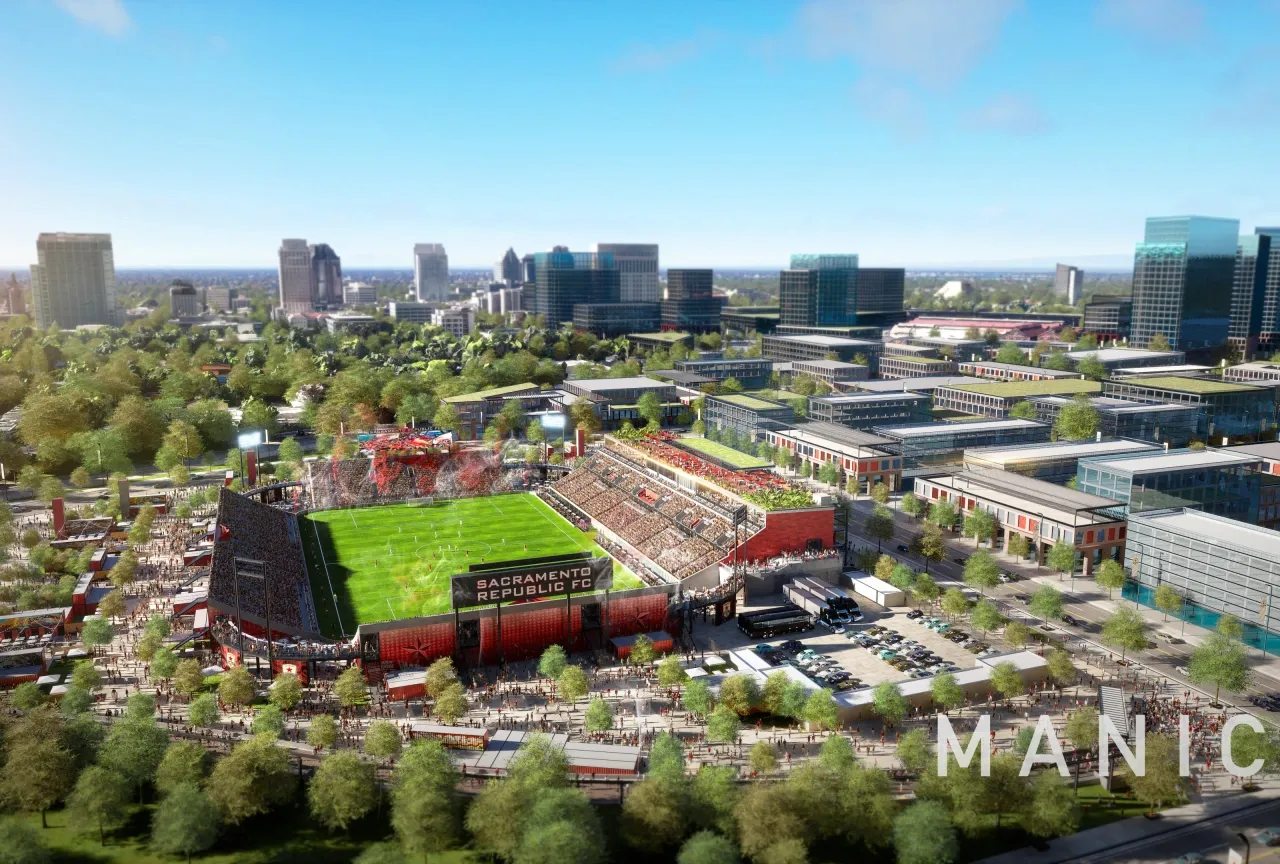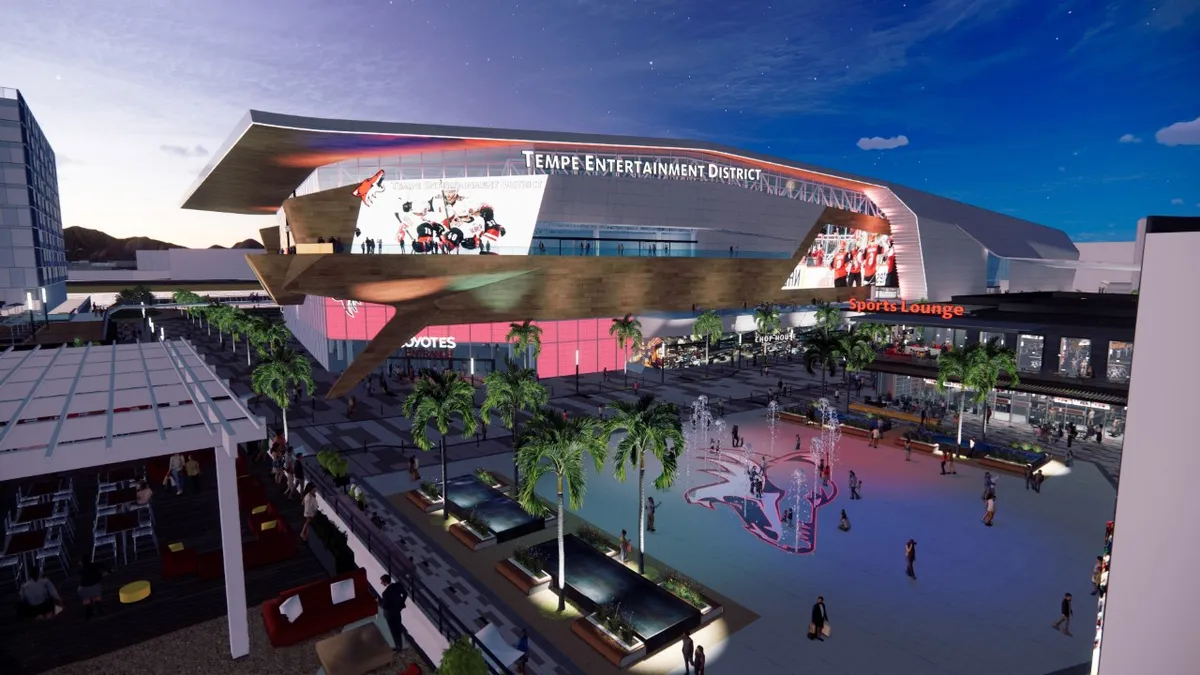Much like their animal namesake, the NHL’s Arizona Coyotes prowl their home state, seeking a new home after having to turn to the ice at Arizona State University to host their home games for next season through 2026.
Thursday, the Coyotes got one step closer to a new den in Tempe, Arizona, when the city council voted to advance negotiations with the team. The team will likely foot the bill for the $1.7 billion arena, after the city of Glendale, Arizona, declined to renew its lease agreement with the team. (See more below.)
Pro sports franchises like the Coyotes often look to update existing stadiums or rebuild new ones to provide fans with a new gameday experience and teams with state-of-the-art facilities. Franchises now look to create large, comfortable outings at mixed-use venues, cultivating a culture that makes attending the game more of a spectacle.
Stadiums aren’t getting any cheaper to build, either. In a 2020 ranking of the 30 most expensive sports venues, 10 were constructed in 2017 or later.
With that in mind, here is a closer look at some of the largest proposed and approved stadium projects across North America’s professional sports leagues.
National Football League
Buffalo Bills — APPROVED
Architect: Populous | Groundbreaking: Spring 2023 (tentative) | Completion date: 2026
The Buffalo Bills will get a new, $1.4 billion stadium in Orchard Park, New York, the same city where their current, 49-year-old arena, Highmark Stadium (pictured above), still hosts their games. The Bills will play in the new venue — expected to have about 60,000 seats — in 2026.
The team has yet to announce a contractor, though Kansas City, Missouri-based architecture firm Populous will provide the design. As part of the agreement with the state, the stadium’s construction will create 10,000 union jobs. Ron Raccuia, executive vice president at Pegula Sports & Entertainment, which owns and operates the Bills, told reporters in late March he anticipated the project would break ground next spring, syracuse.com reported.
Cincinnati Bengals — PROPOSED
The Bengals have played home games in Paul Brown Stadium (pictured above) for a little over two decades. In April, the franchise partnered with Los Angeles architecture and design firm Gensler Sports to determine what upgrades to the stadium would cost, then reported to the Hamilton County Commissioners office. Their findings indicate it would cost upward of $493 million over the next two decades.
The Hamilton County Commissioners have not offered any recommendations. The Bengals' lease at Paul Brown Stadium ends in 2026, and under that agreement, the team can ask the county to pay for millions in stadium upgrades and enhancements starting July 2024.
Tennessee Titans — PROPOSED

Architect: Manica | Projected completion: 2026
Near their current home at Nissan Stadium, the Tennessee Titans plan to build a new stadium, expected to cost roughly $2 billion. The Titans selected Kansas City-based Manica Architecture to design the initial concepts (pictured above), though a source from the team told Construction Dive the rendering is still preliminary. The state legislature put enabling mechanisms in place to provide $500 million in public money to aid with the financing of the new venue if it is constructed.
The Titans hope to build the stadium by 2026, USA Today reported, in the parking lot next to Nissan on the Cumberland River’s east bank. Construction would take roughly two and a half years. In addition, 4 million to 6 million square feet of new mixed-use space will surround the stadium, costing $4 billion and taking up to 15 years to complete.
Washington Commanders — LAND PURCHASED
The newly rebranded Washington Commanders have potentially taken early steps to build a new stadium. The recently rebranded franchise purchased 200 acres of land in Woodbridge, Virginia, valued at about $100 million, WUSA9 reported. The team then conducted an economic impact analysis on the Viginia concept with JLL Sports & Entertainment, the Richmond Times-Dispatch reported. The direct economic impact would bring $24.7 billion in Virginia, supporting over 2,000 jobs over the next decade. Nevertheless, the concept imagines a 55,000-seat stadium, which would be the smallest in the NFL.
National Basketball Association
Los Angeles Clippers — UNDER CONSTRUCTION
Contractor: AECOM Turner JV | Architect: AECOM | Groundbreaking: September 2021 | Completion date: 2024
When finished, the $2 billion Intuit Dome will become the third most expensive U.S. arena ever built. In a joint venture, AECOM Hunt and Turner broke ground on the Inglewood, California, venue in September 2021. The project will finish and open in 2024.
The Clippers’ future home will include 18,000 seats; special “courtside cabanas,” or boxes right up against the hardwood to watch the game; and an ambitious sustainability plan.
Major League Baseball
Oakland Athletics — PROPOSED
The Oakland Athletics want out of the Coliseum. The franchise intends to privately fund the $1 billion, 34,000-seat waterfront Oakland Ballpark at Jack London Square, according to project details shared on mlb.com. The franchise has threatened for years to depart the old stadium which the MLB called “not viable.” The NFL’s Las Vegas Raiders, who shared the venue, departed in 2020.
The project would include an overhaul of the waterfront, with a $12 billion total investment poured into 2,000 units of housing, 1.5 million square feet of office space, 270,000 square feet of retail space, a 400-room hotel and 18 acres of parkland, creating an estimated $450 million in economic impact, according to Ballpark Digest.
The San Francisco Bay Conservation and Development Commission has recommended that the project at Howard Terminal, a waterfront property owned by the Port of Oakland, move ahead, according to Ballpark Digest, though the Seaport Planning Advisory Committee previously advised rejection of the project, to keep the waterfront as a shipping lane. More organizations and committees will need to weigh in before the project takes the next step.
National Hockey League
Arizona Coyotes — PROPOSED
In September, the Arizona Coyotes proposed the construction of a $1.7 billion home arena in Tempe, Arizona. June 2, the Tempe City Council voted to advance negotiations with the franchise to build the new arena. The Coyotes lost their lease in Glendale when the city declined to renew it, NBC News 12 reported. As a result, the Coyotes seek a new home, and have offered to largely foot the bill of the 16,000-seat venue. In later phases of construction, the development would add hotels, retail and office buildings.
Major League Soccer
Inter Miami CF — APPROVED
Architect: HOK, Arquitectonica, MANICA | Completion: 2025
The city of Miami approved a new stadium this spring for Inter Miami CF. Founded in 2018, the David Beckham-owned club will move to Miami Freedom Park, near the Miami International Airport. The team will pay for the $50 million venue, which will have 25,000 seats with the capacity to expand to 40,000, in addition to surrounding parks. The entire development area will cost $1 billion and Inter Miami will begin playing in the stadium in 2025.
Sacramento Republic FC — APPROVED

Architect: Manica
USL club Sacramento Republic FC will join MLS in 2023. When they do, they will play at the Railyards Stadium, part of the city’s Railyards redevelopment project. In April 2019, the Sacramento City Council approved the project and a $33 million incentive package to help a local investment group construct the infrastructure around the $252 million, privately funded stadium.<
St. Louis City SC — UNDER CONSTRUCTION
Contractor: Mortenson, Alberici, L. Keeley | Architect: HOK Architects, Snow Kreilich Architects | Completion date: Early 2023
Expansion club St. Louis City SC hasn’t played any games in the MLS yet, but construction on its future home Centene Stadium nears completion. The team will play its home opener in 2023. The $457.8 million stadium will have 22,500 seats with plans to add more for special events.
Over 10 million pounds of steel are being used for the construction, according to the Centene stadium fact sheet. Construction — by a consortium of Mortenson, Alberici Corporation and L. Keeley Construction — will finish by the end of summer.
Correction: This story has been updated to reflect the state of the Tennessee Titans potential stadium.






















